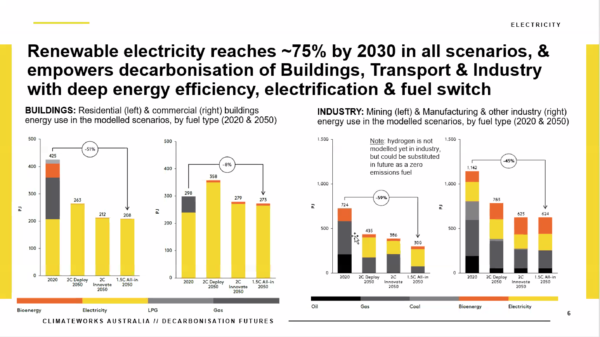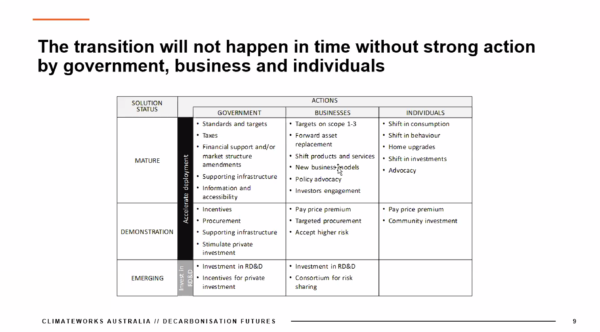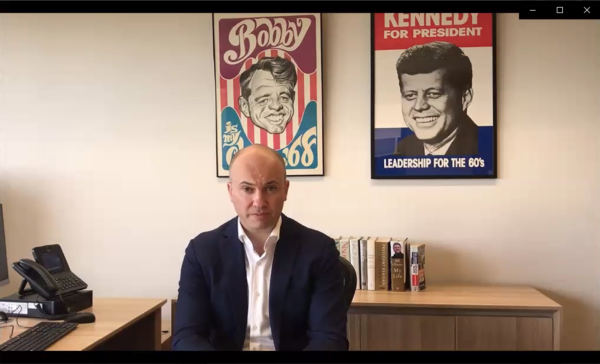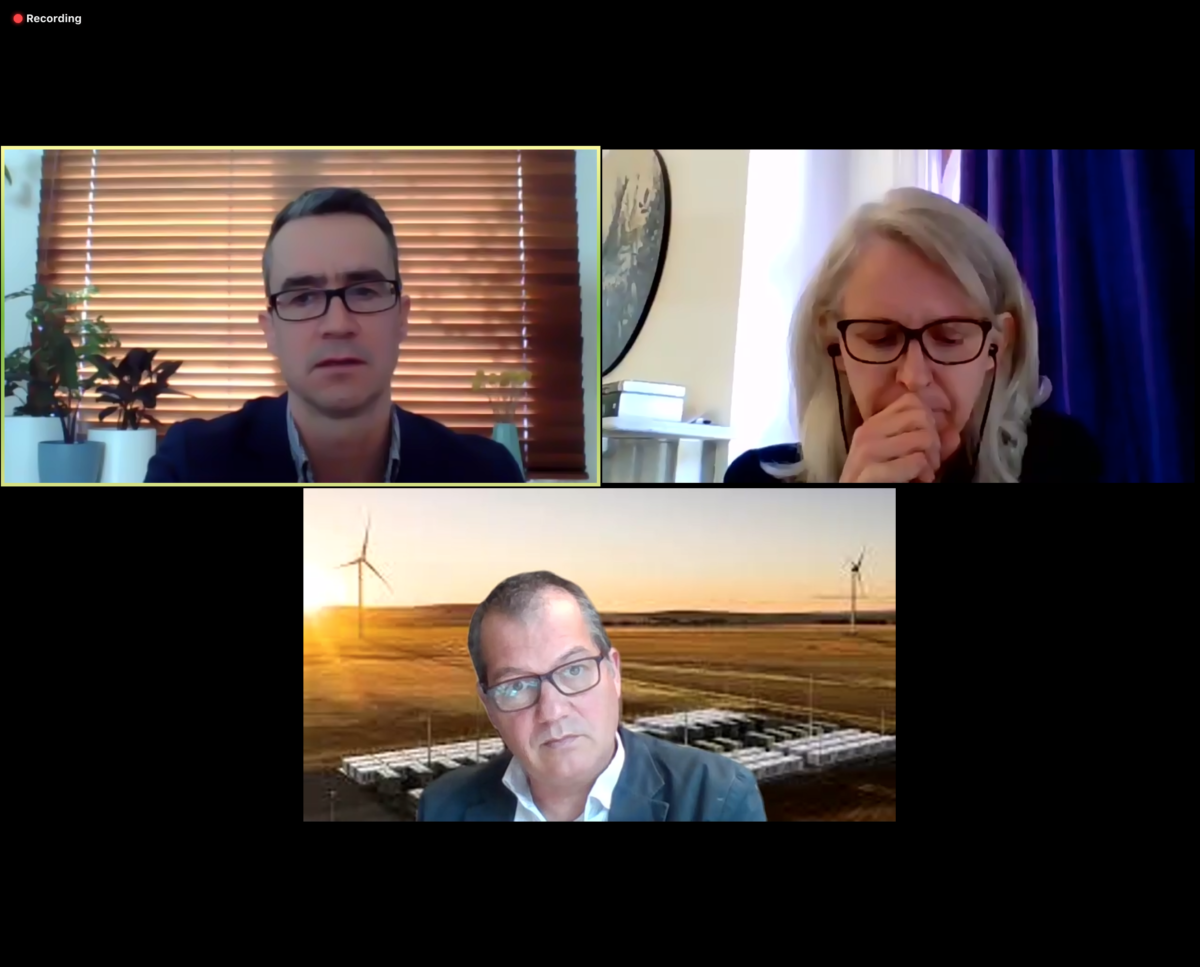Renewable energy is among the industries that have continued to progress even during Covid-19. At the Clean Energy Council’s (CEC) Clean Recovery Forum held virtually today and dialled into by more than 1,000 industry members, the clear message was that bringing forward the gigawatts of renewable-energy projects in the development pipeline will:
- Create over 50,000 new direct jobs, and many more indirect jobs during construction
- Triple the amount of large-scale renewable energy installed in Asutralia with the addition of more than 30 GW of new capacity
- Inject $50 billion of investment into the Australian economy — much of it in rural and regional areas.
“We have to remember that shovel-ready projects are rarer than you think when a crisis hits,” Innes Willox, Chief Executive of the Australian Industry Group, told the crowd, noting that other opportunities for recovery through jobs creation and broadly beneficial impact will take a lot longer to get across the line and to action.
John Titchen, Managing Director of Goldwind Australia, which sponsored the online, solutions-to-your-livingroom forum, said Goldwind has installed 1,000 megawatts of wind turbines over the period of the crisis so far, and confirmed the industry’s readiness to progress many large-scale-generation projects that already have approvals in place, although he acknowledged that major pre-Covid challenges, such as connection delays, transmission bottlenecks and network weaknesses remain.
Major bottleneck must be resolved
“Transmission is one of the single biggest challenges facing investors in clean energy,” said CEC Chief Executive Kane Thornton, who has been tireless in his advocacy for grid infrastructure that will support the renewables penetration needed in the 21st century. He said, “We’re going to need to accelerate important reform that’s critical to giving investors the confidence to bring forward those 30,000 megawatts of projects.”
In tandem with its Forum, the CEC today also released a report — A Clean Recovery: Using Australia’s enormous renewable energy potential to create jobs and jumpstart the economy — to inform government and industry of further economy-boosting, emissions-reducing initiatives, many of which are already underway.
Speakers at the forum were united, for example, in their support of rolling out the electric-vehicle-charging network to encourage take-up of EVs.
A nationwide home-battery program implemented in tandem with a smart distribution network, says the CEC, will accelerate and leverage distributed energy resources, reduce household energy prices during constrained economic times ahead, and also provide thousands of jobs for installers.
Enabling win, win, win situations
The multifaceted benefits of advancing renewable energy projects to aid the national recovery were demonstrated again and again by various forum speakers.
Said Willox, “Recovery and energy transition are overlapping projects, but they’re not identical.” Where recovery options have “nothing much to do with transition”, he said governments and industry should still “run a ruler over them to ensure that we have no regrets in the long term.
“We need a framework for preparing options” for recovery, Willox added, to prioritise and soundly implement them. “Even with dire need, not every idea is worth doing. We have to weigh bang for buck,” he said.
Former banker, Anna Skarbek, CEO of ClimateWorks Australia brought CWA’s report — Decarbonisation Futures: Solutions, actions and benchmarks for a net zero emissions Australia — to life for the audience.
The report is an update on research carried out with the CSIRO in 2014, which found Australia could achieve net-zero emissions by 2050. In 2020, she says, “We found that during the past five years technology has improved faster than was predicted, and that net zero emissions pathways are now possible and effective” to achieve 75% renewable electricity penetration by 2030 across buildings (domestic and commercial), transport and industry (including mining).

Image: ClimateWorks Australia
The scenarios modeled by CWA also show that Australia can reduce emissions in line with limiting global temperature rise to 2 degrees Celsius; and “if governments, businesses and individuals go ‘all-in’, a 1.5-degree limit could be within reach, says the report.

Image: ClimateWorks Australia
Most importantly, Skarbek said the report showed that this coming decade, as the country pulls out of the economic trough created by Covid-19, is crucial, “with the years before 2030 offering a window for action that will not stay open”.
The state at the centre of the National Electricity Market
NSW Minister for Energy and the Environment, Matt Kean, told the Clean Recovery Forum that despite his government’s focus on safeguarding lives and supporting the disadvantaged through Covid-19, nothing had changed in its commitment to transition the state to a clean energy future: “It hasn’t changed our promise to the people of New South Wales to move to net zero emissions by 2050.”

Image: pv magazine
What has changed, he said, “is the way we’re looking at measures to get us there”. Kean said his department is looking for initiatives that can be brought forward to support the state economy and “and move to the upside of this pandemic”.
In NSW, recovery projects and strategies will be “subjected to a triple test: Will they deliver decarbonisation? Will they deliver jobs? And will they deliver faster economic growth?”
Today’s forum showed that projects with a renewable-energy focus are the perfect fit.
This content is protected by copyright and may not be reused. If you want to cooperate with us and would like to reuse some of our content, please contact: editors@pv-magazine.com.









1 comment
By submitting this form you agree to pv magazine using your data for the purposes of publishing your comment.
Your personal data will only be disclosed or otherwise transmitted to third parties for the purposes of spam filtering or if this is necessary for technical maintenance of the website. Any other transfer to third parties will not take place unless this is justified on the basis of applicable data protection regulations or if pv magazine is legally obliged to do so.
You may revoke this consent at any time with effect for the future, in which case your personal data will be deleted immediately. Otherwise, your data will be deleted if pv magazine has processed your request or the purpose of data storage is fulfilled.
Further information on data privacy can be found in our Data Protection Policy.